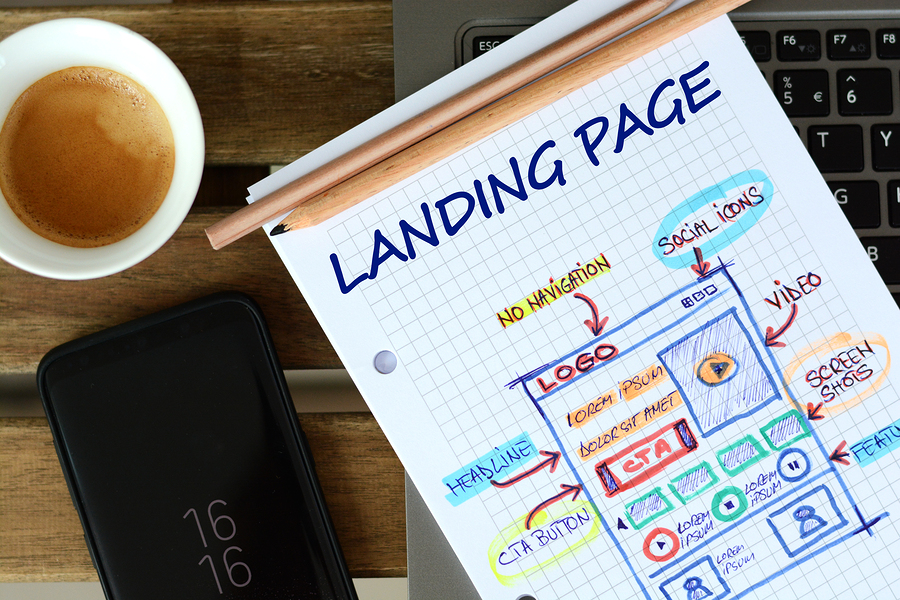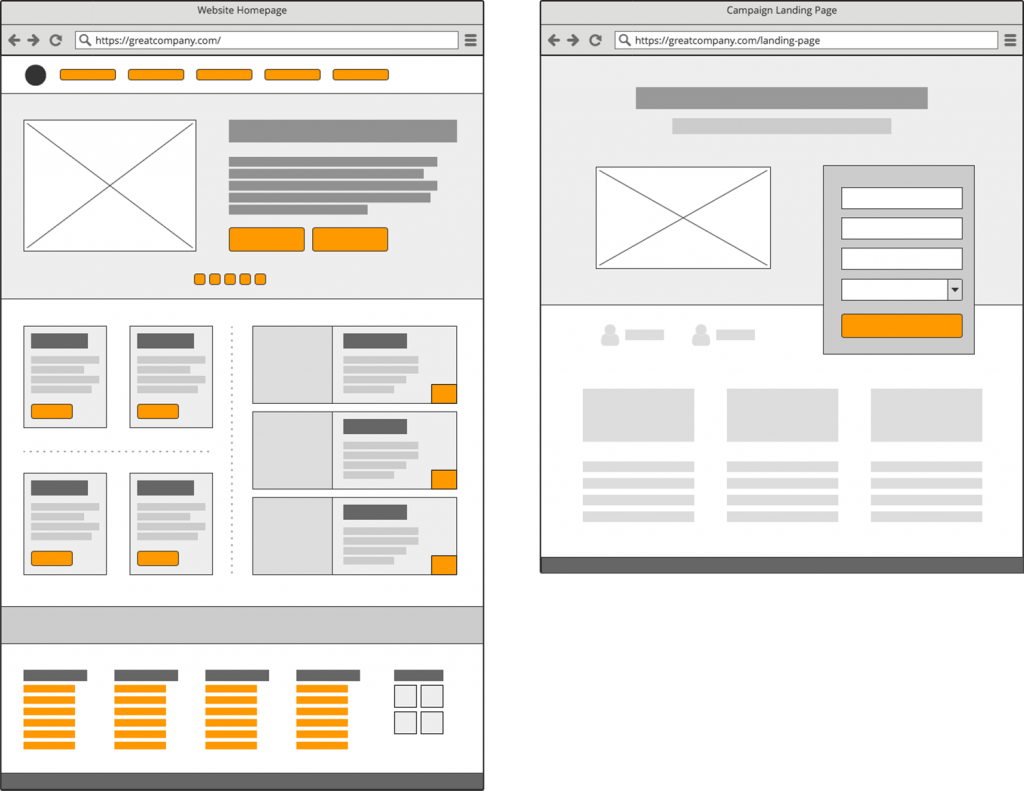The Role of Landing Pages in Dental Advertising

In recent years ‘landing pages’ have become more widely used by expert marketers. And there are good reasons why. Today, landing pages are considered essential in advertising for every possible business, including local businesses such as dentists. With that said, it’s rare to find landing pages being used in dental advertising. Given how powerful this marketing strategy is, it’s surprising that more dentists aren’t utilizing this strategy.This article will explain why landing pages in dental advertising are so essential.
What is a Landing Page?
When asking the question, “What is a landing page?” you need to understand that they are a standalone page that is designed for a paid advertising campaign. It’s the page prospects arrive on after clicking on the advertisement.
To better understand the difference between a landing page, and any other type of page on your website, it’s necessary to recognise the differences between organic traffic and paid traffic.

On Google paid advertising, you can specify where the advertising link takes your visitors. You could either send them to your homepage or to a landing page that is designed intentionally for paid advertising traffic.
Conversely, with the organic search results, Google selects which page on your website the link will point to. The distinction being, with paid advertising you get to choose which page your prospects visit. Therefore, you can customise the destination page, according to the wants, needs, and desires of your visitors.
The Difference Between a Landing Page and a Dental Homepage
I frequently experience dental advertising traffic sent to a non-specific landing page such as the homepage. This reduces the performance of the advertising because the homepage is too generic.
The homepage speaks to a broader audience, rather than just one specific patient group. Such as those people with interest in dental implants.
The homepage will have many navigation links, which take the visitor to other pages on the website. While navigation links are required on a homepage, they are not necessary on landing pages.
Therefore a good landing page should have a single focused goal or a most-desirable action. For example, the goal might be to get a visitor to fill in a free consultation form. Or to capture the visitor’s email address, so they enter an automated email marketing campaign.
The screenshots below show the difference between a homepage and a landing page. The orange highlighted areas illustrate where the navigation links are placed on the page. The Homepage has forty-three navigation links, while the landing page only has one.

When we place fewer navigation links on the landing page, there are fewer distractions. Fewer distractions mean the visitor is less likely to leave the page. By keeping the visitor focused on the most wanted action for the landing page, the advertising will improve.
Let’s now look at some of the benefits a landing page can offer in dental advertising.
1. Increase The Conversion Rate
The primary reason for using a landing page is to help improve the performance of your dental advertising. Expert marketers will measure the performance of a landing page, by analysing the conversion rate.
To understand the conversion rate, you must first understand a conversion. A conversion is when the site visitor takes the ‘most-wanted’ action on the page. This can include a visitor clicking a button, submitting an enquiry form or making a sales call. Therefore, the ‘Conversion rate’ measures the percentage of page visitors that take the most-wanted action.
To calculate the conversion rate, we divide the number of conversions by the total number of visitors. For example, if my landing page had 200 visitors in a single month, and it resulted in two sales leads (conversions), the conversion rate calculation would be 2 divided by 200, multiplied by 100, equals a 1% conversion rate.
Most dentist advertising is about driving visitors to the page. Which is great. But if the conversion rate is ignored, the only way get more patients is by spending more on dental advertising.
If however, we aim to improve the conversion rate, we can quickly increase the number of patients, without having to spend more on advertising.
For example, if we manage to grow the conversion rate from 1% to 2%. We not only get more leads, but we increase the number of leads by double (100%). Just from a simple 1% lift in the conversion rate.
Sidenote: The correct way to set up a conversion goal and measure conversion rate is on Google Analytics. Google Analytic is a free web analytics service offered by Google that tracks and reports website traffic of the site. Google Analytics will accurately register the conversion goal whenever the most-wanted action is taken on your landing page.
2. Reduce Distractions
As was just mentioned, every key page on your website should have a clearly defined most-wanted action. Despite, anything on these pages that doesn’t contribute to that particular most-wanted action might serve as a distraction. Distractions are conversion killers, particularly so with paid traffic.
Landing pages are designed in such a way to reduce as much distraction as possible, by either eradicating them or minimising them, by pushing them to less critical parts of the page. The most common distractions include navigation links to other parts of the site, moving or blinking elements such as banners or automatic image sliders, and content that doesn’t directly contribute to people taking the most-wanted action.
3. Improve Ad Scent
Whenever you have a paid traffic campaign, one of the first things to remember is that relevancy is crucial to a successful campaign. The best web design and sales copy wouldn’t persuade people to buy something they didn’t want.
A good landing page will communicate an ultra-specific message to an ultra-specific audience. It will make the writing in the ad, entirely relevant to the content on the landing page. When the sales copy in the ad, fits perfectly with the content on the landing page, we call this ‘ad scent.’
Ad scent will make the ad copy and the landing page message look and feel the same. There needs to be “scent” in an advertising campaign, and it’s the landing page that will ensure that the ad maintains the same scent.
4. Boost The Performance of Other Dental Advertising
A successful inbound marketing strategy will rely on a high converting landing page. As we know, sending paid traffic to a homepage can be wasteful. So landing pages should be the focal point of your marketing, as these are designed with the intention of converting more visitors into leads and patients.
A landing page can be used with offline advertising, such as print media, where the ad prompts prospects online and to the landing page. They can also be used with alternative online advertising such as email marketing, banner advertising, and social media.
5. Generate More Advanced Dental Patients
The conversion rate for general dental services is considerably higher than the conversion rate for advanced dental services. This is because a patient’s decision-making process for less expensive, less complicated procedures is generally much quicker.
In contrast, people rarely make a quick decision when it comes to deciding about advanced dental procedures. Most people will do some research first, and are generally more diligent before they make their decision.
The use of landing page in dental advertising, especially for generating more advanced dental patients is crucial. By focusing your landing page to get more of your prospects onto a subscriber list, you can continue building a relationship with them with an email marketing campaign, while they are making their decision. In doing this, you advance your marketing message communication, and over time strengthen their belief that you are the right choice for the procedure.
In Summary
One of the main objectives of your marketing should be to boost your conversion rate so that more visitors turn into leads and patients. The more you improve the conversion rate, the less it will cost you to acquire a new patient, and the more profitable your advertising campaigns will be.
Landing pages are the first page that visitors arrive on after clicking from your advertising. Whether it’s banner ads, Google ads, promotional emails or something else. The landing page can be a specific page on your website, but more often a page created exclusively for a paid traffic campaign. They are intended to direct visitors to take a particular action, such as completing an online form, subscribing to your mailing list or making a sale call enquiry.
If you are interested in having a landing page optimisation strategy, then give us a call on (02) 0819 0825 to discuss how we might help. Alternatively, if you would like us to evaluate your current landing page, go ahead and click the button below. In our free landing page audit, we evaluate the strength of the landing page and provide tips on how to improve it.




